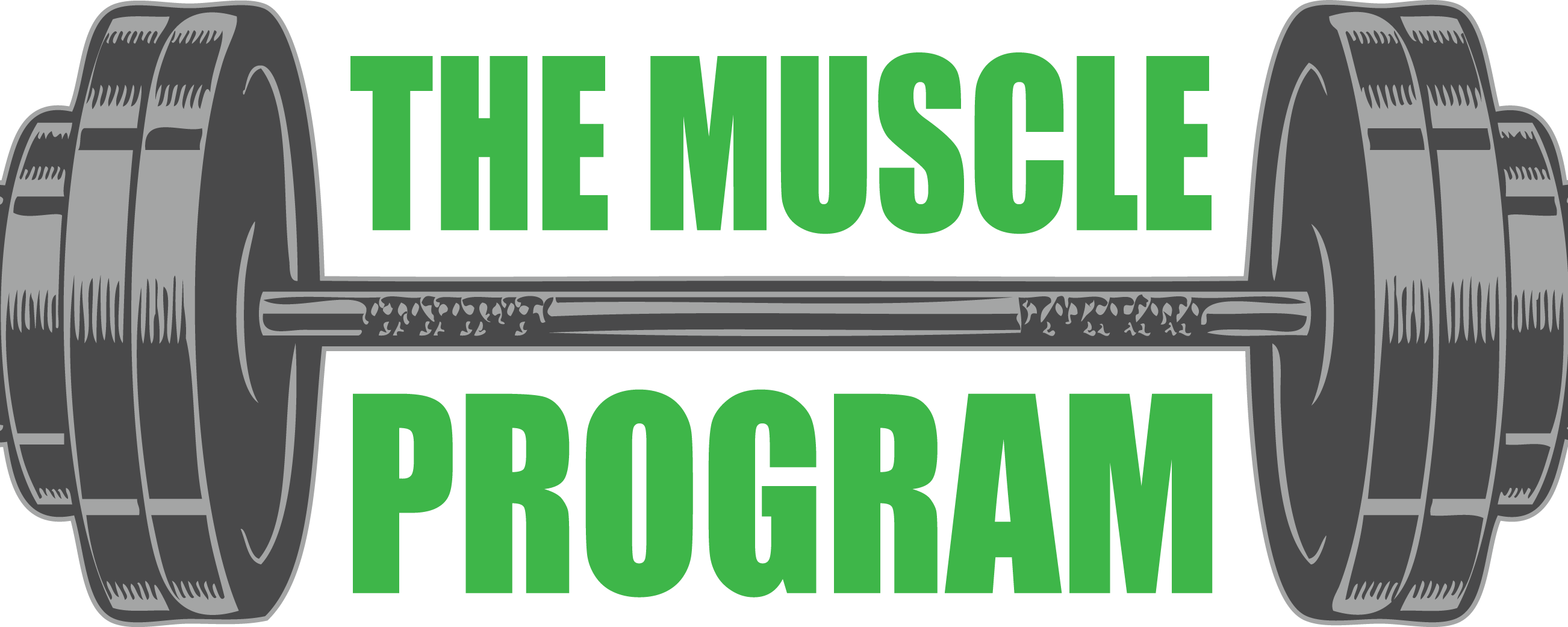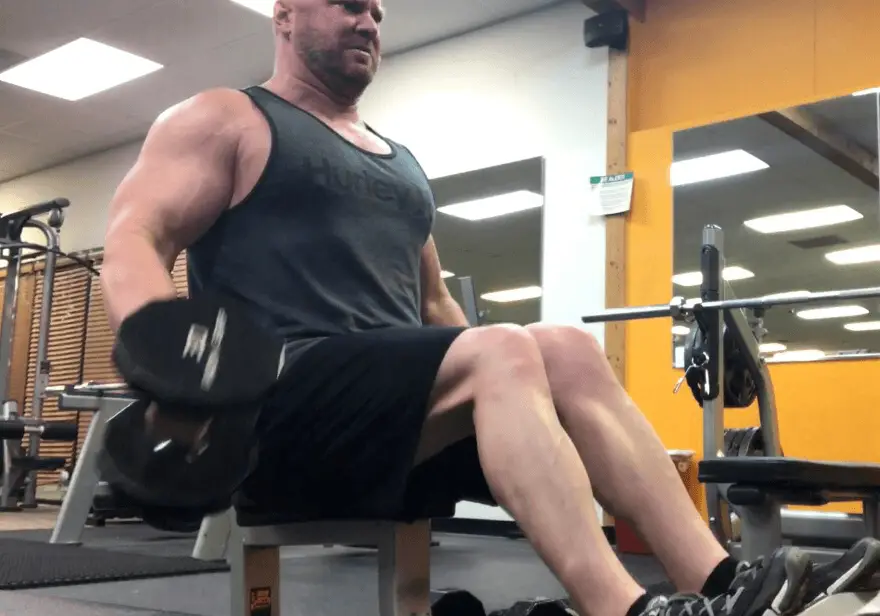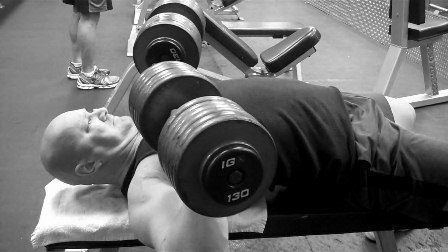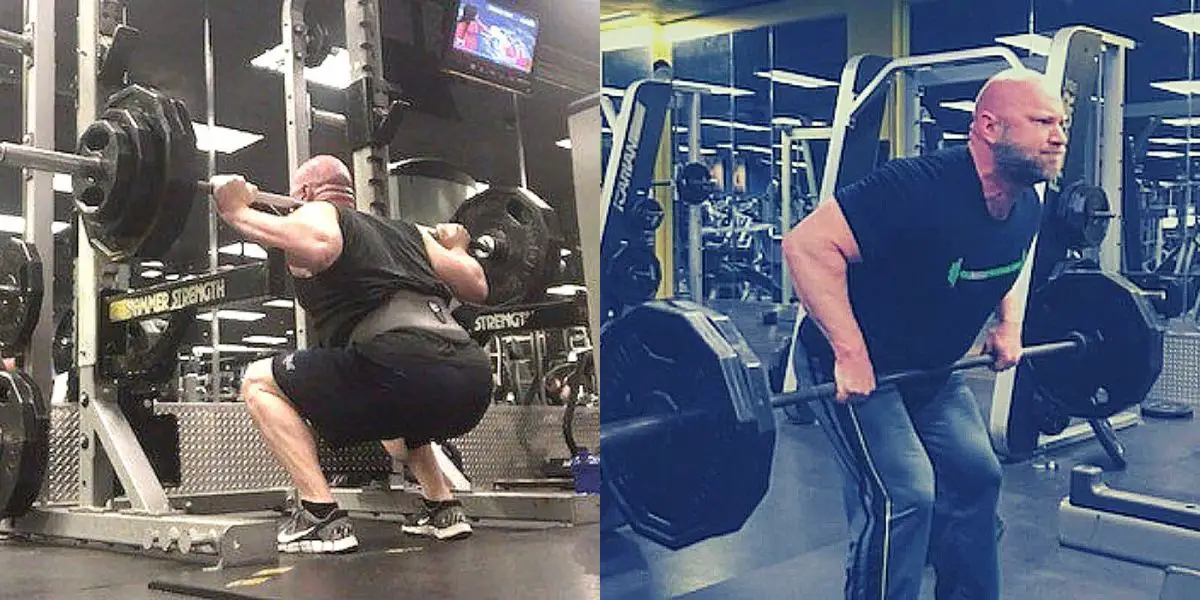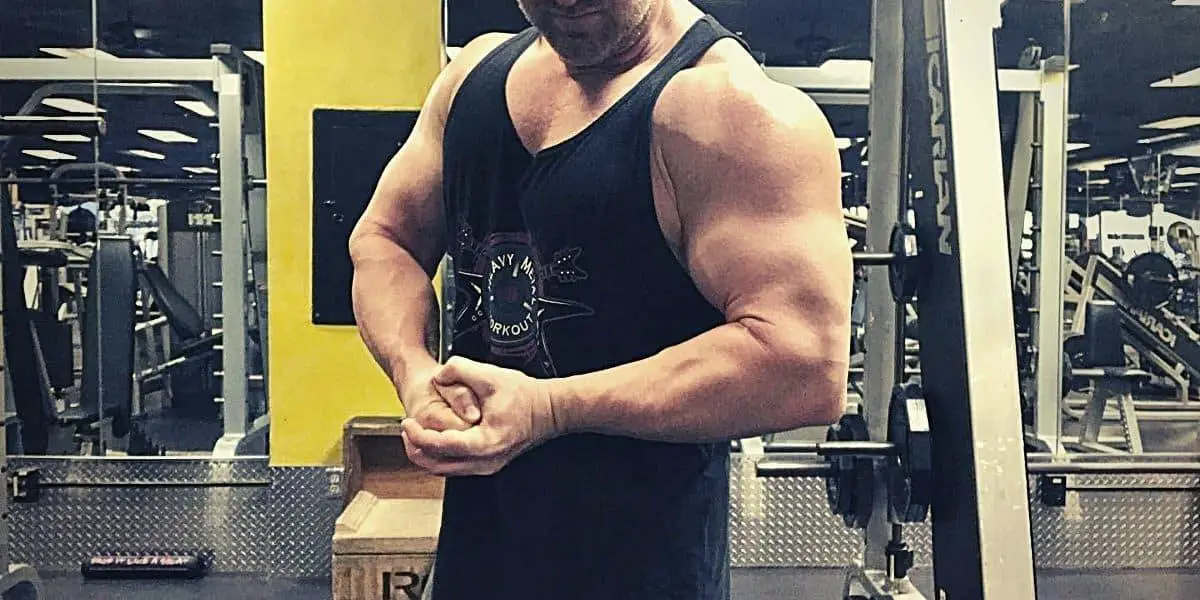7 Weight Training Techniques to Increase Intensity
If you’ve hit a plateau or just not making gains, the one thing you need to do is increase your training intensity.
In this post, I’m going to give you the top 7 weight training techniques to increase intensity.
You’re also going to get actual workouts for each weight training technique I give you.
This will make it easier for you to understand exactly how to use these techniques for maximum muscle gains!
Why It’s Important to Increase Intensity
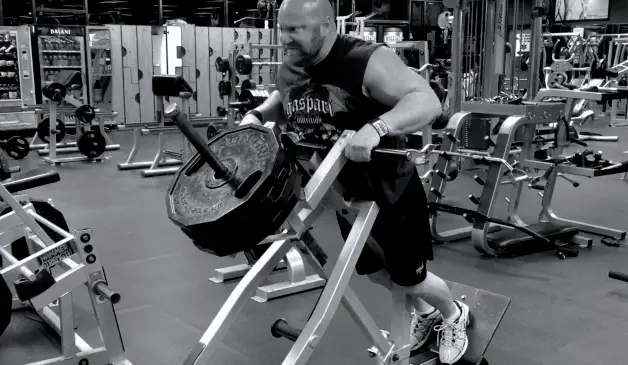
Just showing up to the gym is not enough to build muscle and get stronger. You have to work out like you mean it! You have to be on a mission…a muscle-building mission!
It’s all about getting the most out of every workout and making every rep count. And the only way to do that is to increase your training intensity.
Here’s what ramping up your workout intensity will do for you:
- Build muscle faster by breaking down the muscle during your intense workouts
- Make you stronger by pushing yourself harder, going beyond your limits
- Give you better muscle definition and body composition from exhausting your muscles, and burning more calories
Without intensity, you’re just going through the motions. Now, you may be able to stay in decent shape that way.
But you’re not going to achieve massive gains. And that’s why you’re here…to get massive results!
The Problem with Regular Workouts
Look, there’s nothing wrong with regular workouts or doing straight sets. You can indeed build muscle that way.
The problem is the mindset you have doing regular workouts vs using techniques to increase training intensity.
Simply put, you’re probably going to get far more out of your workouts using one or more of the techniques I’m giving you below.
7 Weight Training Techniques
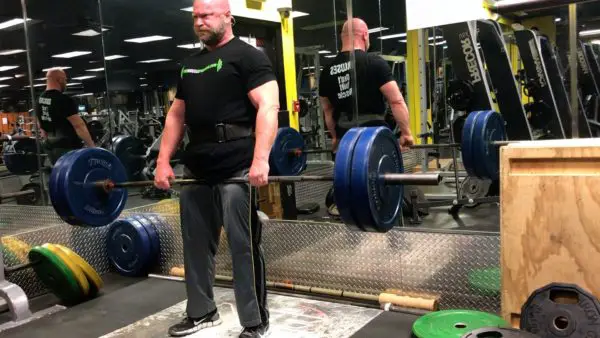
Now let’s dig into the 7 weight training techniques to increase intensity. Each technique will also have an example of a workout that you can do using them.
After we go through each technique, I’ll also show you some ways to combine multiple techniques in the same workout. It’s grow-time!
1 – Rest-Pause Sets
I’m listing this first because it’s the most brutal of weight training techniques. You want intensity? You’ve got it, and then some!
What are rest-pause sets? It’s similar to a drop set but there’s one problem…you’re not reducing the weight (told ya this was gonna be intense!) It’s a guaranteed way to exhaust your muscles.
Here’s how you perform a rest-pause set:
- Do 1 set
- Rest 7-10 seconds
- Do another set using the same weight
The cool thing about this technique is you don’t have to stop there. You can continue doing 1-2 more rest-pause sets (3 total will more than likely be your max to completely exhaust the muscle).
Rest-Pause Workout for Huge Calves
If you want to blow your calves up, do the below rest-pause routine.
Calves are a bit unique in nature and have more stamina than other muscles. So you’re going to do several rest-pause sets until you hit a total of 75 reps. I call this ‘75s for Calves.’
- Exercise: Seated Calves Raises
- Weight: 150 lbs (use a weight you can do about 20 reps with)
- Rest Between Sets: 10 seconds
| Rest-Pause Set | Estimated Reps |
|---|---|
| Set 1 | 20 |
| Set 2 | 15 |
| Set 3 | 12 |
| Set 4 | 10 |
| Set 5 | 10 |
| Set 6 | 8 |
Your reps may be different from what I listed. You may need a 7th set, or you may be able to hit all 75 reps in 5 sets. Either way, this specific method will force your calves to grow (they won’t have a choice but to obey you!).
**I do recommend doing rest-pause sets for isolation exercises using machines or dumbbells. I do not recommend using this weight training technique on your compound lifts. And use rest-pause towards or at the end of your workout to finish it off.
In fact, I have an entire post going more in depth on how and when to use res-pause sets in this post: How To Perform Rest-Pause Sets: Increase Intensity for New Mucsle Gains
2 – Giant Sets
I was going to list this technique as supersets, and those are great. But the problem with regular supersets is it’s easy to just go through the motions. The other issue is one exercise will typically get more intense than the other.
What are giant sets, and how are they different from supersets?
Giant sets typically consist of doing 3 exercises in a circuit. But wait, isn’t that just a longer superset? No, because with supersets there’s no, or minimal rest between the 2 exercises in that superset.
With giant sets, it’s ok to take a breather between sets. However, not a long rest…maybe 30-45 seconds.
The goal with giant sets isn’t to burn out. Rather, it’s to help you get stronger and more conditioned (giant sets will take a while to get used to!).
Giant Sets Workout for Big Legs
Here’s an example of a leg workout using giant sets. Going through all 3 exercises equals 1 giant set.
Round 1: 4-5 Giant Sets
| Exercise | Reps |
|---|---|
| Leg Curls | 12 |
| Squats | 6-8 |
| Ab Crunches | 12 |
Round 2: 3-4 Giant Sets
| Exercise | Reps |
|---|---|
| Stiff-leg Deadlifts | 8 |
| Leg Press | 15 |
| Decline Situps | 12 |
As you can see, the exercises are grouped into ‘rounds.’ And you’ll want to go through each round 3-4 times (this will essentially be 3-4 sets for each exercise).
- Going through all 3 exercises is 1 giant set.
- You can add a 3rd round of exercises if you want to expand.
**Here’s another trick. Try to use giant sets with contrasting muscles, or agonist and antagonist muscles.
A great example is back and chest, or biceps and triceps. In fact, we’ll get more into that in the next tip for increasing training intensity.
3 – Push-Pull
This is one of my personal favorites for ramping up workout intensity. Because the results are so awesome, I almost always train my 2 largest contrasting muscles together: chest and back.
Push-Pull could be considered ‘Part 1’ of the above technique, giant sets. But I want you to focus on the concept of doing the pushing and pulling exercises together.
The push-pull concept is based on training those agonist and antagonist muscles together.
Push-Pull Chest-Back Workout
I’ll use my most common chest and back workout as an example.
| Exercise | Sets x Reps |
|---|---|
| Bench Press | 4 x 6-8 |
| Barbell Rows | 4 x 6-8 |
| Incline Bench Press | 4 x 10 |
| Lat Pulldowns | 4 x 10 |
| Dumbbell Flyes | 4 x 12 |
| Seated Rows | 4 x 12 |
You can do this type of workout 1 of 2 ways:
- Do the exercises as listed above (ex: 4 sets of bench press, 4 sets of barbell rows, etc)
- Or you can alternate the exercises (ex: 1 set of bench press, 1 set of barbell rows, etc)
I personally prefer the latter. That seems to be a more intense workout, and also enhances your conditioning.
**If you’d like more of my chest and back workouts, read this post: Can You Train Chest and Back Together?
Here are some more ways you can mix push-pull exercises together:
- Back with Shoulders
- Biceps with Triceps
- Quads with Hamstrings
4 – 10×10
If you’re ready to experience new muscle growth, try the 10×10 technique. This is an awesome way to break up your workouts, especially if you’ve hit a plateau.
What exactly does 10×10 mean? It’s as simple as it sounds: 10 sets of 10 reps.
10×10 is based on German Volume Training. This technique has been used for decades and is known to promote both strength gains and muscularity.
Think about it, if you can bench press 225 for 10×10, you can probably easily get that 315 max you’ve been after!
There are 2 major benefits I like about using 10×10:
- You get more overall training volume in less time (mainly because you’re only focused on a few exercises)
- You pump more blood into the muscle with all of the overall reps
10×10 Chest Workout
Here’s one of my 10 x 10 chest workout.
| Exercise | Sets x Reps |
|---|---|
| Bench Press | 10 x 10 |
| Incline Dumbbell Press | 3 x 8 |
| Cable Flyes | 3 x 10 |
*For the 10×10, rest about 45 seconds to a minute between sets.
10×10 Back Workout Video
One way of doing a 10×10 workout is just picking 1 main exercise for the 10 sets of 10 reps. If you do that right, you won’t be able to do much after because those muscles will be exhausted. So you can finish with a few sets of supporting exercises.
Another way to look at 10×10 is to use the Push-Pull method we just talked about. Here’s how that workout would look:
- Barbell Rows: 10 x 10
- Bench Press: 10 x 10
- Lat Pulldowns: 2 x 10
- Incline Dumbbell Press: 2 x 10
**You can read more about 10×10 (German Volume Training) in my post: German Volume Training Workouts
5 – Negatives
There’s one sure way to increase workout intensity when your goal is strength gains. Negatives. Or to better explain, doing negative reps.
Negatives are something you’ll do on your last set, and usually just the last rep or 2. This forces the load on your muscles by taking away momentum you might normally use.
What is a negative rep? Let’s use bench press as an example (cause that’s an easy one). Let’s say you’re on your final set and pushing some heavyweight. One that very last rep, you’ll take several more seconds to bring the weight back down towards your chest.
**You will obviously need a trusted spotter for this!! DO NOT do this without a spotter!
This key benefit to negatives is this gets your muscles used to control the weight, thus making you stronger.
Back Workout with Negatives
Since we talked about the chest, I’m going to give you a back workout as an example of using negatives.
*You’ll perform negative reps at the end of your last set for the first 2 exercises below:
| Exercise | Sets x Reps |
|---|---|
| Barbell Rows | 4 x 10, 8, 6, 5 – negative on final rep |
| Seated Rows | 4 x 12, 10, 8, 8 – negative on final rep |
| Lat Pulldowns | 3 x 12 |
| Dumbbell Rows | 3 x 12 |
Negatives work awesome for back and you don’t really need a spotter. Just perform your barbell rows from the floor.
That way you easily let the weight back down on the floor after that negative rep. And it’s really simple with machine-based exercises like seated rows.
Unlike bench press or overhead press, the weights not going to fall on top of you when your muscles give out (because they will definitely give out when doing negatives).
Along with negatives, some like doing forced reps. This is where you have a spotter assist with those last rep or 2 that you can’t get by yourself. And this is typically on the way up after your negative reps (which pretty much all your strength is zapped!).
6 – Triple Drop Sets
Now, I could’ve just said ‘drop sets’ but I want us to take things to the next level. If you really want to increase training intensity, do triple drop sets instead.
Let’s back up and define what drop sets are. This is when you perform a set, then reduce the weight by about 30% and perform another set.
In essence, you’re doing 2 sets in 1. Heck, it’s like a buy 1 get 1 free deal for your muscles.
Triple drop sets are just doing 3 sets in 1. It will look like this:
- Set 1: Normal Set
- Set 2: Drop set (reduce weight by 30%)
- Set 3: Drop set (reduce weight by 20%)
Oh, it may be obvious but in case it’s not, there’s no rest between drop sets. And that’s what makes this technique so intense.
Triple Drop Set Arm Workout
Here’s how you can turn a simple arm workout into a super intense one using triple drop sets.
| Exercise | Sets x Reps |
|---|---|
| Barbell Curls | 3 x 8 – triple drop on final set |
| Rope Pressdowns | 3 x 12 – triple drop on final set |
| Dumbbell Hammer Curls | 3 x 10 – triple drop on final set |
| Single Cable Pressdowns | 3 x 12 – triple drop on final set |
7 – Unilateral Sets
One of the most unique weight training techniques that I’ve come across to increase intensity is unilateral sets. In fact, I only started throwing these in from time to time in my latter years of training.
Here are 2 key benefits of doing unilateral sets:
- Allows you (or forces you) to focus on an individual muscle
- Builds strength and conditioning at the same time
What are unilateral sets? First of all, it’s best to do these with dumbbells or machines that have unilateral capability.
Using seated dumbbell press as an example, here’s how unilateral exercises work:
- Press both dumbbells up over your head for the initial rep
- Only bring 1 dumbbell down while holding the other up
- Once you press the dumbbell back up, bring the opponent down while holding the other up
Sound exhausting? It is! And you will get an intense pump and burn.
Unilateral Shoulder Workout
Normally I would only do the unilateral technique for my final exercise of the workout. But to give you a greater example, I’m doing it on the 2nd and final exercise.
Actually, at the time of writing this, I’ve never done unilateral lateral raises…I’ll be trying this tomorrow!
| Exercise | Sets x Reps |
|---|---|
| Seated Overhead Press | 4 x 6-8 |
| Seated Dumbbell Press | 3 x 8 – unilateral sets |
| Dumbbell Shrugs | 4 x 8-10 |
| Lateral Raises | 3 x 8 – unilateral sets |
How to Combine Weight Training Techniques
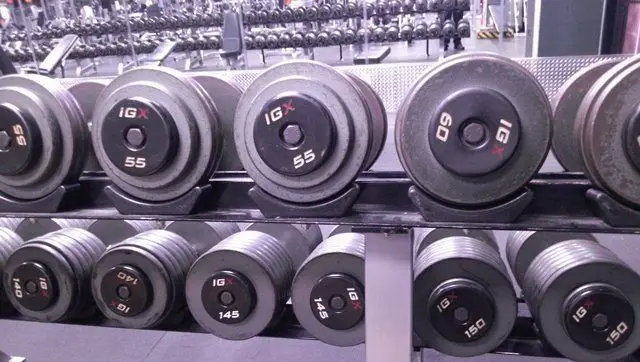
Want to add even more intensity to your workouts? Try combining some of the weight training techniques in the same workout.
I’m going to give you a couple of examples. And these are some types of workouts I do on a regular basis.
Push Pull with Rest-Pause Sets Workout
| Exercise | Sets x Reps |
|---|---|
| Barbell Rows | 4 x 6 |
| Bench Press | 4 x 6 |
| Dumbbell Rows | 4 x 8 |
| Incline Dumbbell Press | 4 x 8 |
| Lat Pulldowns | 3 x 10 – rest pause x2 on final |
| Cable Flyes | 3 x 10 – rest pause x2 on final |
- All back and chest exercises are alternated
- I’m doing 2 rest-pause sets at the end
Leg Workout with Workout with 10×10 and Triple Drop Sets
| Exercise | Sets x Reps |
|---|---|
| Squats | 10 x 10 |
| Leg Extensions | 3 x 12 – triple drop on final |
| Leg Curls | 3 x 12 – triple drop on final |
Realistically you’ll probably be done after 10 sets of squats!
I hope you got some awesome information out of this post 7 Weight Training Techniques to Increase Intensity.
**Read about this workout next for even more intensity: FST-7 Mass Building Workout Routine.
Train with Passion,
Jason
